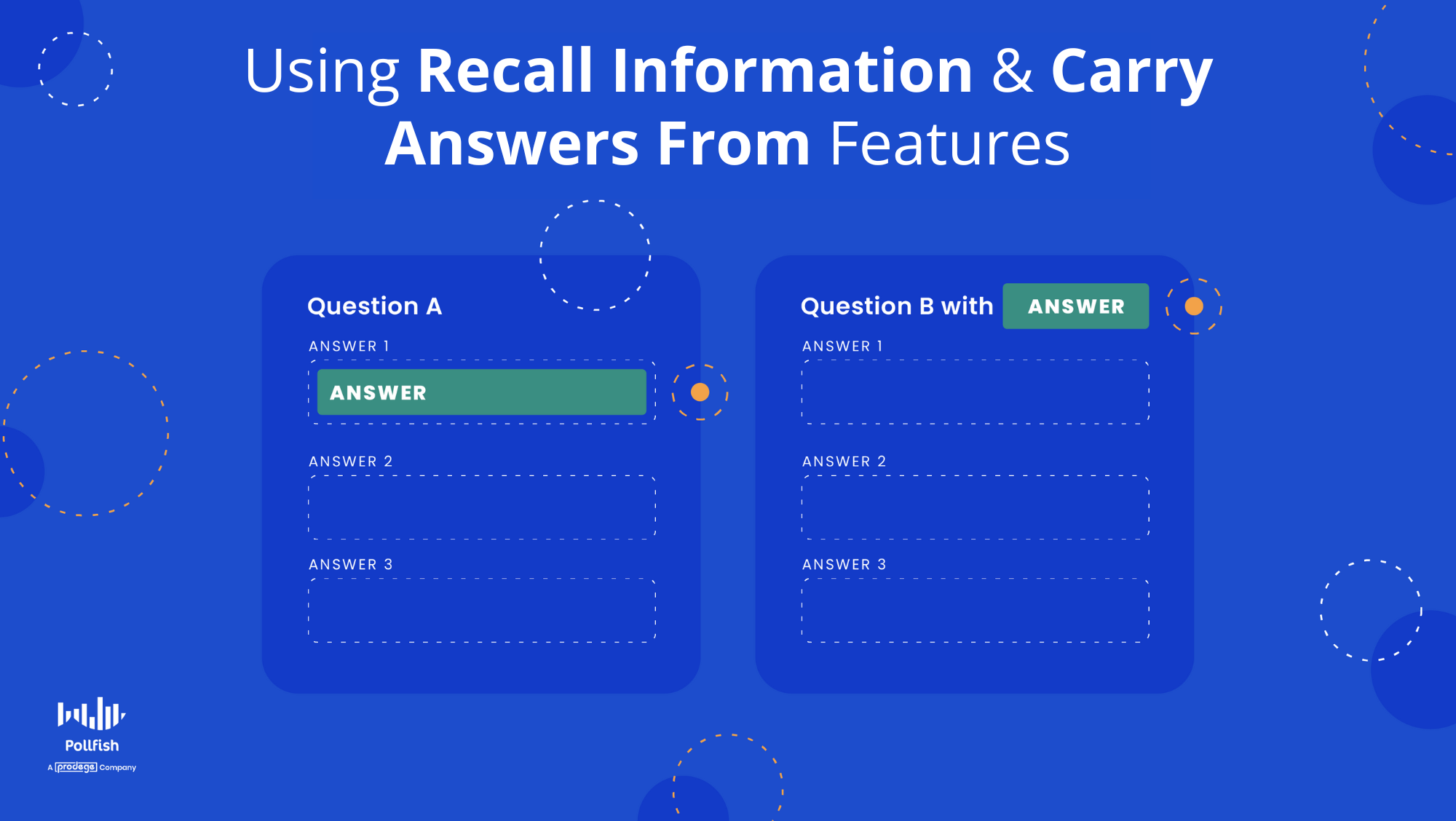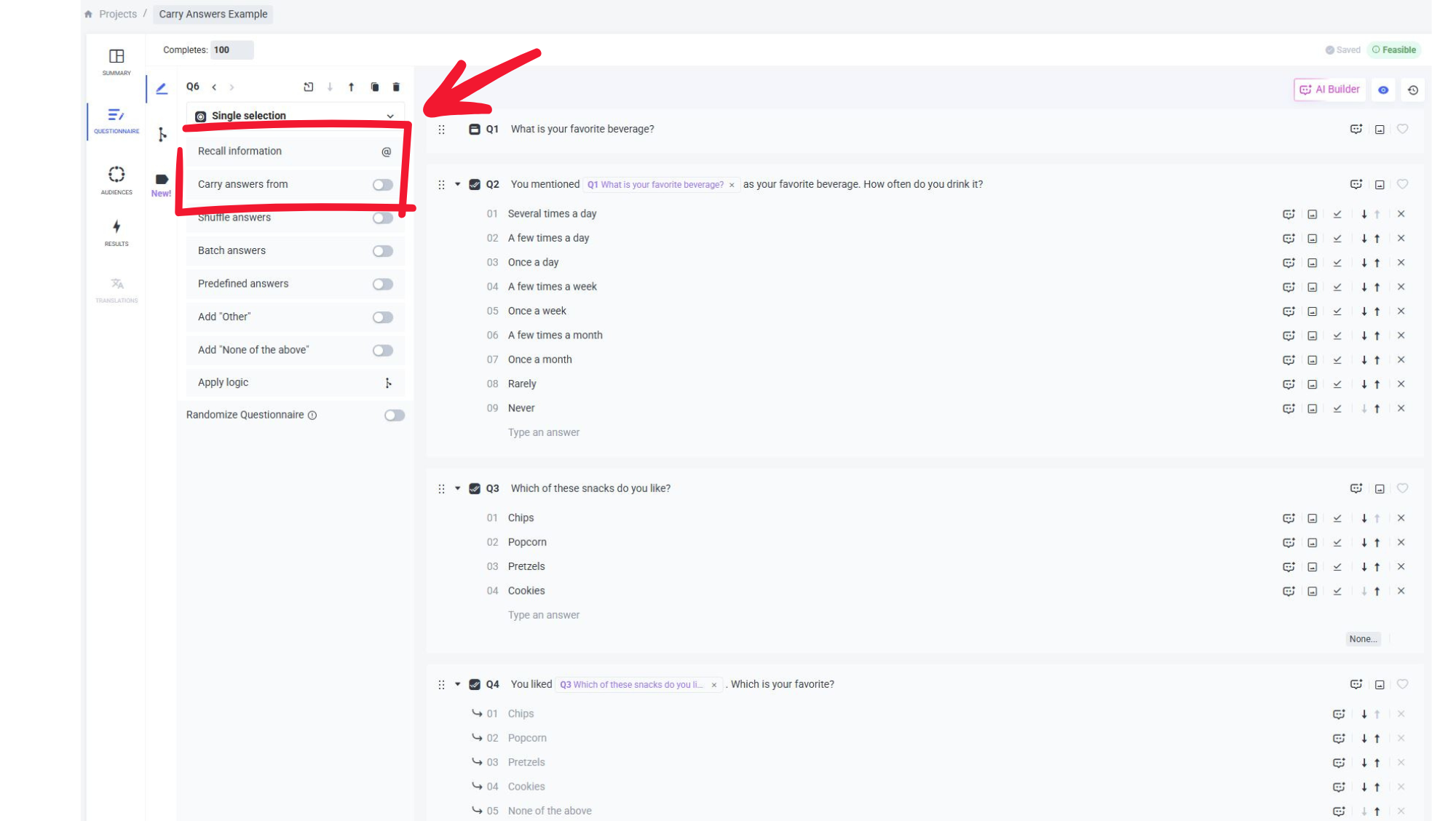Automating Text Insertion: Using the Pollfish Recall Information & Carry Answers From Features
Pollfish offers powerful automation features that allow you to dynamically insert text into survey questions and answers.
These features help personalize surveys, improve respondent experience, and streamline survey creation.
This guide covers the two primary methods for automating text insertion: Recall Information and Carry Answers From.
1. Recall Information Feature
The Recall Information feature allows you to reference a respondent’s previous answer within a later question. This helps create a more seamless survey experience by making questions feel more tailored and relevant.
How It Works:
- This feature pulls responses from an earlier question and dynamically inserts them into subsequent questions.
- The recalled text appears in brackets
{}where it will be inserted. - You can recall text from all question types, including:
- Open-ended questions
- Multiple-choice and single-choice questions
- Matrices such as:
- Single Matrix
- Multiple Matrix
- BiPolar Matrix
- Van Westendorp Pricing Meter
Example:
- Q1: What is your favorite beverage? (Open-ended)
- Q2: You mentioned
{Q1}as your favorite beverage. How often do you drink it?
If the respondent answered “Coffee” in Q1, the follow-up question would appear as:
You mentioned Coffee as your favorite beverage. How often do you drink it?
2. Carry Answers From Feature
The Carry Answers From feature allows you to pipe selected answers, unselected answers, or all answers from a previous question into a following question. This makes it highly flexible for customizing follow-up questions based on user selections.
How It Works:
- You can choose to carry over only selected answers, unselected answers, or all answers.
- These answers will be displayed dynamically in the follow-up question.
- This works best for single-choice or multiple-choice questions.
Example:
- Q1: Which of these snacks do you like? (Multiple-choice: Chips, Popcorn, Pretzels, Cookies)
- Q2: You liked
{selected from Q1}. Which is your favorite?
If the respondent selected “Chips” and “Popcorn” in Q1, Q2 would be displayed as:
You liked Chips and Popcorn. Which is your favorite?
Alternatively, if using {unselected from Q1}, it would display:
You didn’t choose Pretzels and Cookies. Would you consider them?
Key Benefits of These Features
- Personalization: Makes surveys feel more conversational and engaging.
- Efficiency: Reduces the need for redundant questions and manual survey customization.
- Flexibility: Supports different response types and conditions to tailor survey flows.
Where to Find These Features
- While designing your survey, navigate to the question where you want to insert dynamic text.
- Click on the “Recall Information” or “Carry Answers From” option in the left menu bar
- Select the relevant previous question.
- Choose whether to recall specific responses or pipe selected/unselected/all answers.
- Preview your survey to ensure the logic flows correctly.
By leveraging Recall Information and Carry Answers From, you can create more interactive and customized surveys, enhancing both respondent engagement and data quality.
Related Reading
We also offer another critical feature for building your surveys: the advanced skip logic feature, which routes respondents to relevant follow-up questions based on their previous answers.
Pollfish Marketing Team
Ready to Try Pollfish?
Create your survey with AI, target high-quality respondents starting at $0.95 per complete, and start getting results in just minutes in real-time. From running a simple product concept survey to managing a constant stream of trackers for dozens of clients in dozens of countries, we’ve got you.


